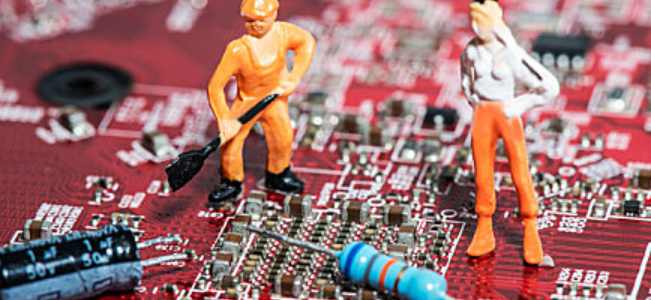
1. The weldability of circuit board holes affects the welding quality
Poor weldability of circuit board holes will produce virtual welding defects, affect the parameters of components in the circuit, lead to the instability of multilayer components and inner wire conduction, and cause the functional failure of the entire circuit.
The so-called welderability is the property of the metal surface being wetted by molten solder, that is, the metal surface where the solder forms a layer of relatively uniform continuous smooth adhesion film. The main factors affecting the solderability of printed circuit board are:
(1) the composition of solder and the nature of the solder. Solder is an important part of the welding chemical treatment process, it is composed of chemical materials containing flux, commonly used low melting point eutectic metal for Sn-Pb or Sn-Pb-Ag, where the content of impurities to have a certain fraction of control, to prevent the oxides produced by impurities are dissolved by flux. The function of flux is to help solder wet the circuit surface of the plate by transferring heat and removing rust. White rosin and isopropyl alcohol solvents are commonly used.
(2) Welding temperature and metal surface cleanliness will also affect the weldability. The temperature is too high, the solder diffusion speed is accelerated, at this time has a high activity, will make the circuit board and solder melt surface rapid oxidation, welding defects, circuit board surface pollution will also affect the weldability resulting in defects, these defects include tin beads, tin balls, open circuit, poor gloss.

2. Welding defects caused by warping
Circuit boards and components in the process of welding produce warping, due to stress deformation and produce defects such as welding, short circuit. Warping is often caused by an imbalance in temperature between the upper and lower parts of the board. For large PCB, due to the weight of the board falling will also produce warping. Common PBGA devices are about 0.5mm away from the printed circuit board. If the device on the circuit board is large, the solder joint will be under stress for a long time as the circuit board returns to its normal shape after cooling. If the device is raised 0.1mm, it will be enough to cause an open weld.
3. The design of circuit board affects the welding quality
In the layout, the size of the circuit board is too large, although welding is easier to control, but the printing line is long, the impedance increases, the anti-noise ability decreases, the cost increases; After hours, the heat dissipation decreases, welding is not easy to control, easy to appear adjacent lines interference with each other, such as the electromagnetic interference of the circuit board. Therefore, PCB board design must be optimized:
(1) shorten the connection between high-frequency components, reduce EMI interference.
(2) Large weight (such as more than 20g) components, should be fixed with a support, and then welded.
(3) Heat dissipation of the heating element should be considered to prevent defects and rework caused by large ΔT on the surface of the element. The thermal sensitive element should be far away from the heating source.
(4) the arrangement of components as parallel as possible, so not only beautiful and easy to weld, suitable for mass production. Circuit board design is the best 4∶3 rectangle. Do not mutate the wire width to avoid discontinuity in the wiring. When the circuit board is heated for a long time, copper foil is easy to expand and fall off. Therefore, large area copper foil should be avoided.
(1) Select a reasonable hole size. For multi-layer general density PCB design, it is better to choose 0.25mm/0.51mm/0.91mm(drill/pad/POWER isolation area) through hole; For some high density PCB can also use 0.20mm/0.46mm/0.86mm through hole, can also try non-through pilot hole; For the power supply or ground wire hole can be considered to use a larger size, in order to reduce the impedance;
(2) The larger the POWER isolation area, the better. Considering the pore density on PCB, it is generally D1=D2 0.41;
(3) Signal routing on PCB should not change layers as far as possible, that is to say, to reduce holes as far as possible;
(4) The use of thinner PCB is beneficial to reduce the two kinds of parasitic parameters through the hole;
(5) The pin of the power supply and the ground should be made to the nearest hole. The shorter the lead between the hole and the pin, the better, because they will lead to the increase of inductance. At the same time, power and ground leads should be as thick as possible to reduce impedance;
(6) Some ground holes are placed near the holes of signal layering in order to provide a short distance circuit for the signal.
Of course, in the design needs to be specific analysis. Considering both cost and signal quality, in the design of high-speed PCB, the designer always wants the hole as small as possible, the template can leave more wiring space, in addition, the hole is smaller, its own parasitic capacitance is smaller, more suitable for high-speed circuits. In the design of high density PCB, the use of non-through-hole and the reduction of through-hole size also bring the cost increase, and the through-hole size can not be reduced indefinitely, it is limited by PCB manufacturers drilling and electroplating technology, so it should be given a balanced consideration in the design of high speed PCB through-hole.









